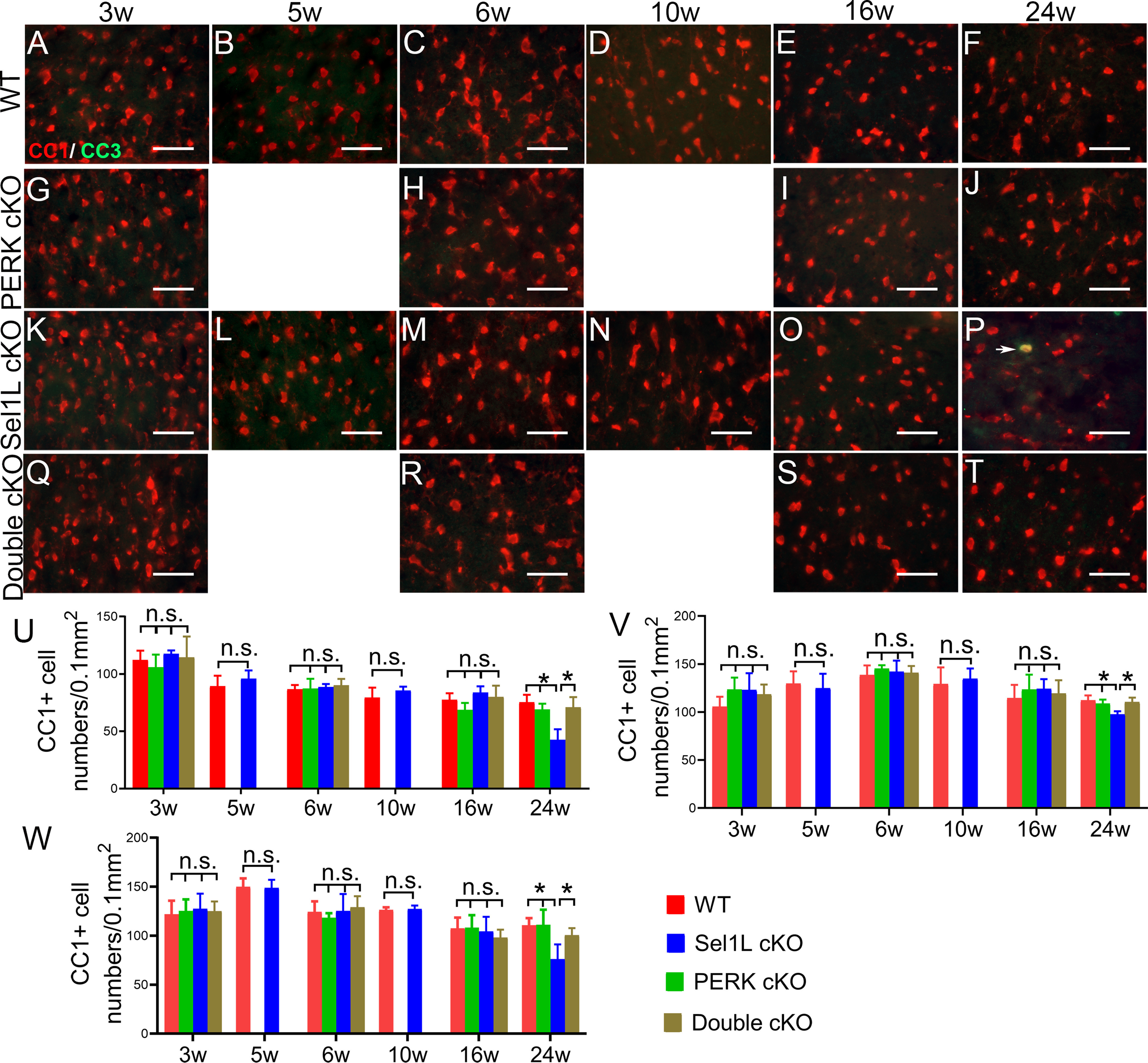Figure 5.

Sel1L cKO mice exhibited oligodendrocyte loss in the CNS at the age of 24 weeks, and PERK inactivation in oligodendrocytes rescued the cell loss in the CNS of Sel1L cKO mice. CC1 and CC3 double immunostaining showed that the number of oligodendrocytes was not significantly changed in the spinal cord (A–E,K–O,U), corpus callosum (V), and cerebellum (W) of 3-, 5-, 6-, 10-, and 16-week-old Sel1L cKO mice compared with WT mice, but was significantly reduced in the spinal cord (F,P,U), corpus callosum (V), and cerebellum (W) of 24-week-old Sel1L cKO mice compared with WT mice (spinal cord: 3 weeks, F(3,12) = 0.7436; 6 weeks, F(3,12) = 0.3068; 16 weeks, F(3,12) = 1.95; 24 weeks, F(3,12) = 15.22; corpus callosum: 3 weeks, F(3,12) = 1.611; 6 weeks, F(3,12) = 0.413; 16 weeks, F(3,12) = 0.430; 24 weeks, F(3,12) = 9.013; cerebellum: 3 weeks, F(3,12) = 0.123; 6 weeks, F(3,12) = 0.542; 16 weeks, F(3,12) = 0.626; 24 weeks, F(3,12) = 7.67). PERK inactivation in oligodendrocytes alone did not alter the number of oligodendrocytes in the spinal cord (A–J,U), corpus callosum (V), and cerebellum (W) of 3-, 6-, 16-, and 24-week-old mice. PERK inactivation in oligodendrocytes did not significantly change the number of oligodendrocytes in the spinal cord (K–O,Q–S,U), corpus callosum (V), and cerebellum (W) of 3-, 6-, and 16-week-old Sel1L cKO mice, but significantly increased the number of oligodendrocytes in the spinal cord (P,T,U), corpus callosum (V), and cerebellum (W) of 24-week-old Sel1L cKO mice. Importantly, there were few CC3-positive oligodendrocytes (arrow) in the spinal cord of 24-week-old Sel1L cKO mice (P). Scale bars, 50 μm. N = 4 animals. Statistical analyses were done with a t test or a one-way ANOVA with a Tukey's post-test. Error bars indicate SD. *p < 0.05. n.s. not significant.
